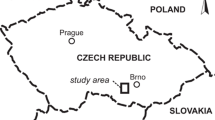Abstract
The Lubin Głogów copper district (lgom) is in an area of copper mining, where ore is mined at a depth of 600–1200 m below surface. Mine dewatering directly influences W-1 limestone aquifer of Permian (Zechstein) age and indirectly impacts a Triassic sandstone aquifer as well as water-bearing sediments interbeded with the coals. The prediction of groundwater inflow into mines has been performed using methods of mathematical modelling. In succeeding steps of the approach, the scheme of the hydrogeological framework was changed starting from the one-layer model up to the four-layer model. The evolution of this hydrogeological schematization is presented in this paper. The latest scheme characterizes such levels of details that allows the following predictions: (1) expansion of depression in all aquifers is influenced by dewatering, (2) the widest extent of depression is in the southern direction, (3) groundwater inflow to the Lubin and Rudna mines will remain at the same level, while the inflow to the Polkowice mine will increase by 25%. Reliable prediction can be achieved by incorporating the entire recharge and drainage area characteristics of the aquifer influenced by mine dewatering into the model.
Similar content being viewed by others
Author information
Authors and Affiliations
Additional information
Received: 7 March 1998 · Accepted: 7 December 1998
Rights and permissions
About this article
Cite this article
Bocheńska, T., Fiszer, J. & Kalisz, M. Prediction of groundwater inflow into copper mines of the Lubin Głogów Copper District. Environmental Geology 39, 587–594 (2000). https://doi.org/10.1007/s002540050470
Issue Date:
DOI: https://doi.org/10.1007/s002540050470




